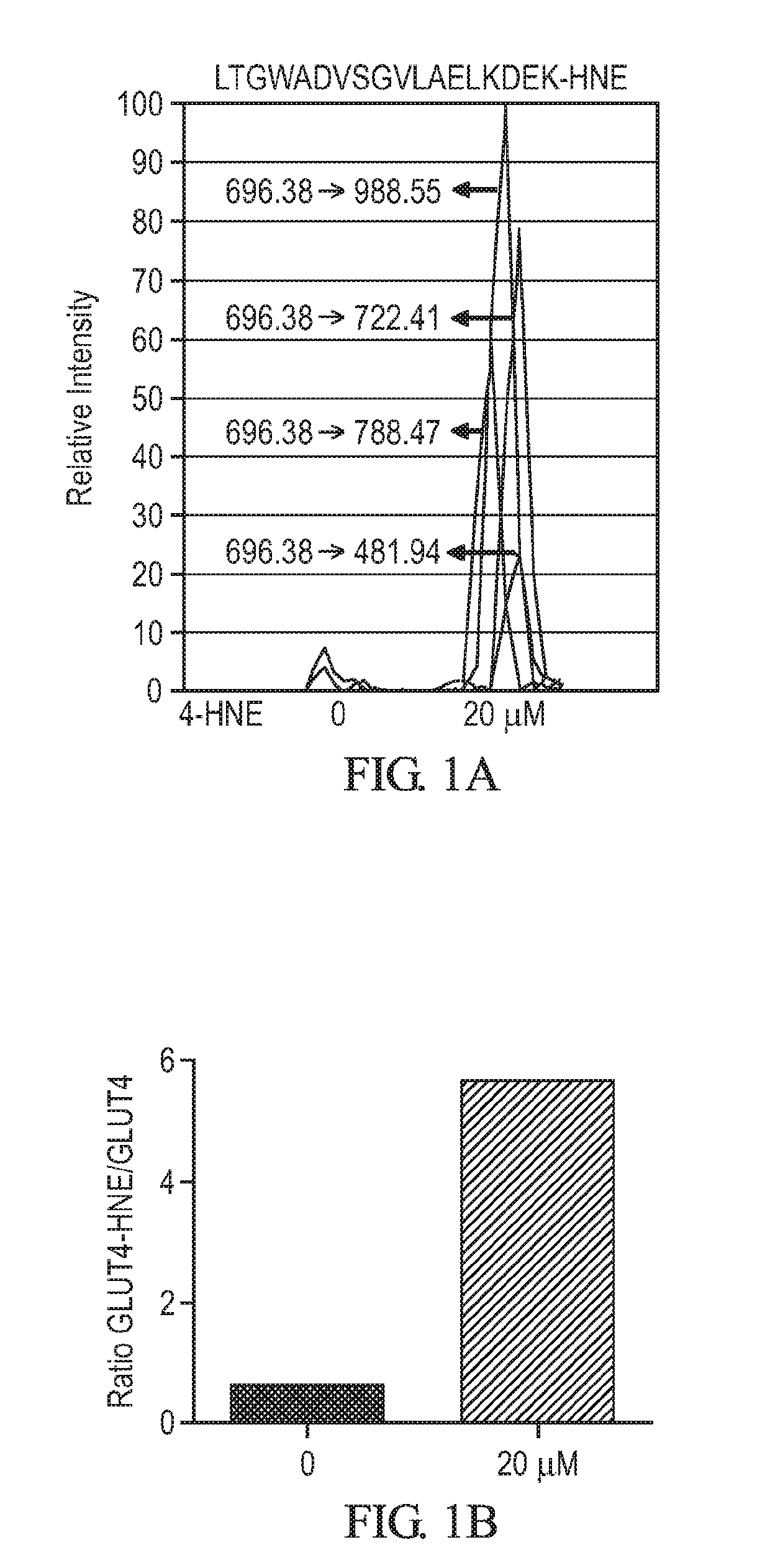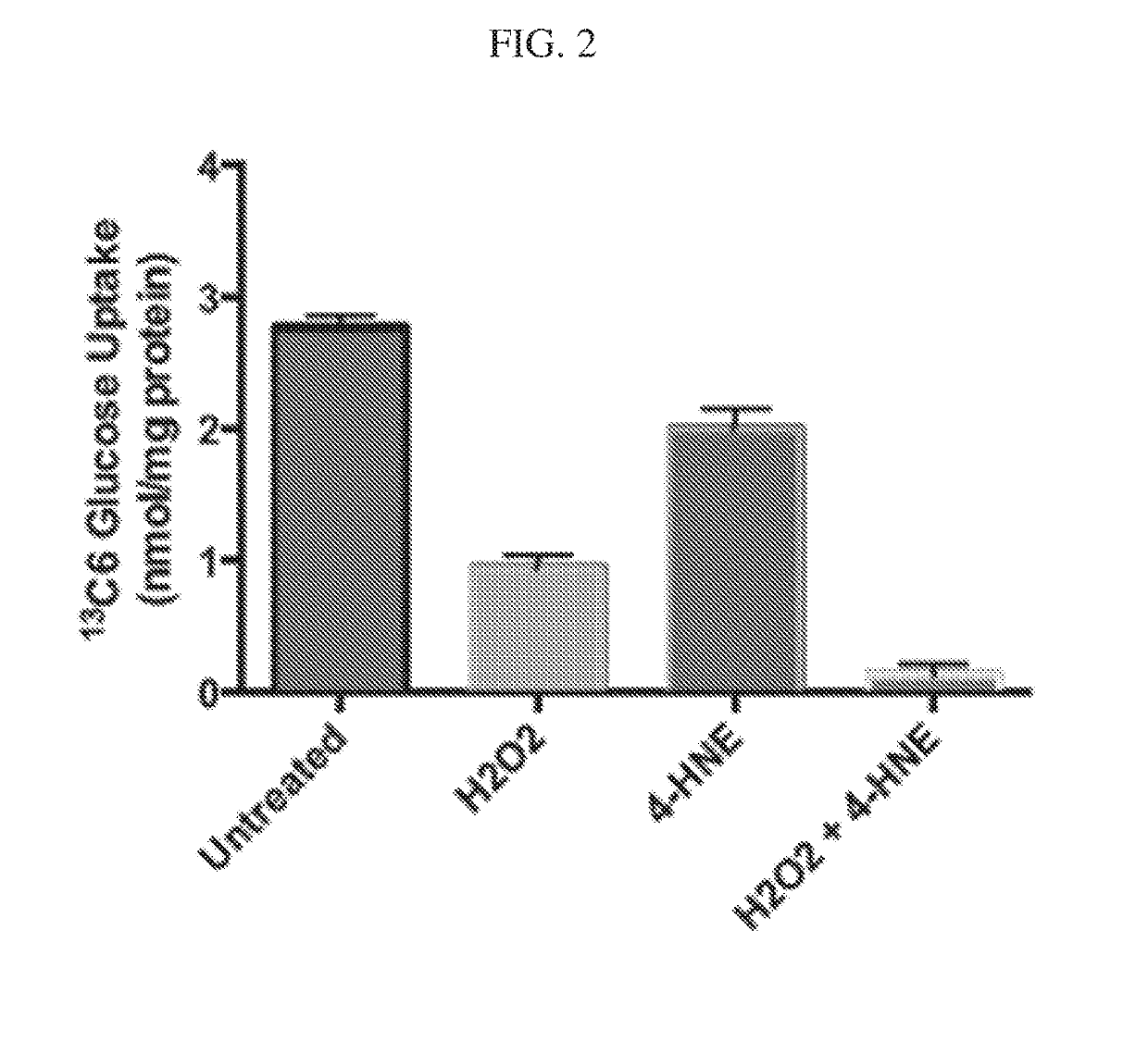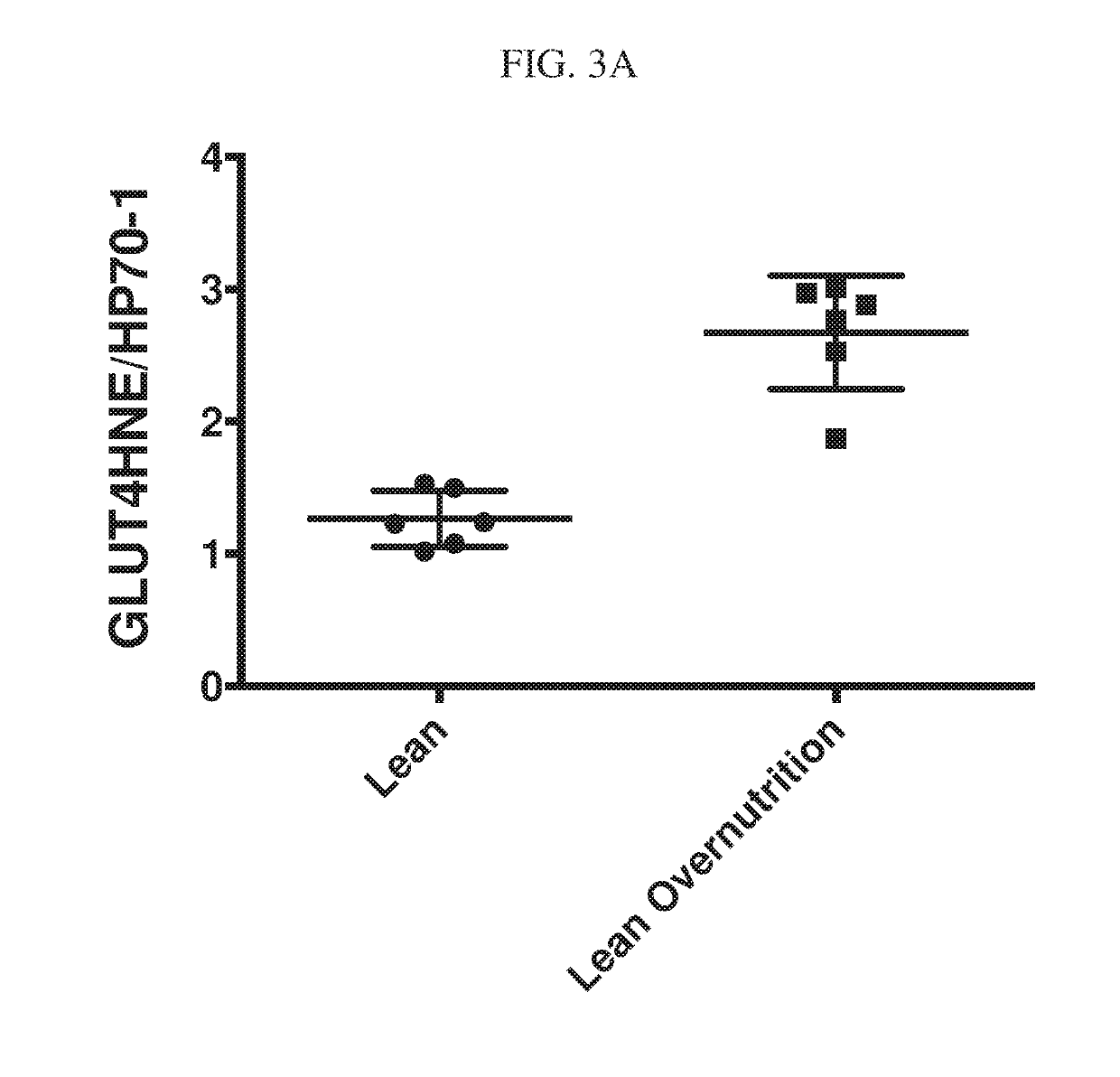Compositions and methods for treatment of insulin resistance
a technology of insulin resistance and composition, applied in the field of metabolic diseases, can solve the problems of high blood sugar, destruction of beta-cell population, elevated glucose in blood, etc., and achieve the effects of reducing insulin resistance, increasing insulin sensitivity, and preventing insulin resistan
- Summary
- Abstract
- Description
- Claims
- Application Information
AI Technical Summary
Benefits of technology
Problems solved by technology
Method used
Image
Examples
example 1
[0249]The following study demonstrates a direct link between function impairment due to GLUT4 carbonylation and insulin resistance. A GLUT4-SNAP fusion construct was generated. 3T3-L1 adipocytes were then retrovirally transduced with the construct to overexpress the GLUT4-SNAP protein. Twenty-four hours after the transduction, the cells were treated with and without 20 μM of 4-HNE for an additional 4 hours. This 4-HNE dose was chosen because it was similar to the physiological levels and was non-toxic. In order to identify and quantitate GLUT4 carbonylation (K264 NHE-adduct or R265 and R246 glutamic semialdehyde adducts), a mass spectroscopy-based multiple reaction monitoring (MRM) method was developed and validated. This high throughput method does not require antibodies, is robust and is sensitive at sub-picomole levels.
[0250]The results are shown in FIG. 1A-1B, indicating that 4-HNE, 20 μM for 4 hour induced the formation of the K264-HNE adduct in 3T3-L1 cells overexpressing GLUT...
example 2
[0251]The following study demonstrates the effect on of 4-HNE and H2O2 on glucose transport. 3T3-L1 adipocytes (1×106) were treated with either 500 μM of 4-HNE or H2O2 or combination of both for 4 hour and were then stimulated with 100 nM insulin for 60 minutes. The glucose uptake was measured by a specific MRM method. The data, presented in FIG. 2, shows that glucose uptake by 3T3-L1 adipocytes was reduced by 32% and 66% with 4-HNE and H2O2 treatment, respectively.
example 3
[0252]The following study demonstrates that GLUT4 carbonylation (adduction by 4HNE) is present in the fat tissue of insulin resistant, pre-diabetic and diabetic human individuals.
A. Fat Tissue Sample Preparation
[0253]Proteins were extracted from the fat tissue (˜200 mg) using a Mem-PER Plus Membrane Protein Extraction Kit (Thermo Scientific #89842) and 1×protease inhibitor (Pierce Halt Protease Inhibitor Cocktail 100×). Tissue was incubated on ice for 10 min, then the homogenized for 2 min at 1000 rpm and proteins were separated by centrifugation at 10,000 g for 15 min.
B. Digestion
[0254]Thirty microliters of each of the samples were denatured with 10 μl of DL-dithiothreitol (5 mg / ml) at 37° C. for 20 min and alkylated with 10 μL of iodoacetamide (12.5 mg / ml) at 37° C. for 20 min. Samples were diluted with 25 mM NH4HCO3 (450 μl) and 10 μL of trypsin was added for protein digestion. Formic acid 1% final concentration was used to stop the digestion and ionize the peptides.
C. Stage Tips...
PUM
| Property | Measurement | Unit |
|---|---|---|
| weight percent | aaaaa | aaaaa |
| particle size | aaaaa | aaaaa |
| retention time | aaaaa | aaaaa |
Abstract
Description
Claims
Application Information
 Login to view more
Login to view more - R&D Engineer
- R&D Manager
- IP Professional
- Industry Leading Data Capabilities
- Powerful AI technology
- Patent DNA Extraction
Browse by: Latest US Patents, China's latest patents, Technical Efficacy Thesaurus, Application Domain, Technology Topic.
© 2024 PatSnap. All rights reserved.Legal|Privacy policy|Modern Slavery Act Transparency Statement|Sitemap



